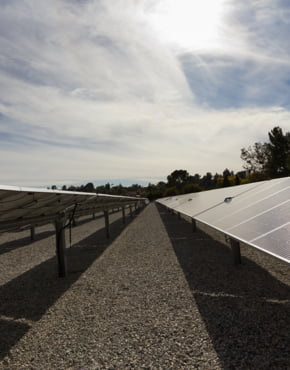Board advances two projects that will increase access to water supply, storage for communities that faced shortages last year
Millions of Southern Californians who were required to dramatically reduce their water use last year will have increased access to water supplies in the future under two projects advanced today by Metropolitan Water District’s Board of Directors.
The projects separately work to push water from the Colorado River and Diamond Valley Lake, Southern California’s largest reservoir, into communities that currently have limited access to these diverse and stored supplies. Today these communities, home to nearly 7 million people, heavily depend on water delivered through the State Water Project from Northern California. When SWP supplies were severely limited during the recent state drought, they faced mandatory measures to reduce water use by more than 35%.
"The severity of our recent drought revealed vulnerabilities and inequities in our water supply and delivery system,” Metropolitan board Chairman Adán Ortega, Jr. said. “While many of our communities had access to diverse supplies and stored water during the record dry conditions, about one-third of Southern California did not. Our board took important steps today toward addressing these inequities. We are investing in new, valuable infrastructure that will help us avoid future shortages for everyone."
Metropolitan’s board approved a $9.8 million contract with J.F. Shea Construction Inc. for the first phase of a project that will help bring additional water from the Colorado River and DVL, in southwest Riverside County, to parts of Los Angeles County and southern Ventura County. The initial phase of the project features the design of two new pump stations along a major Metropolitan pipeline that will allow water from these sources to be delivered to three of the six Metropolitan member agencies that faced mandatory conservation measures: Calleguas Municipal Water District, Las Virgenes Municipal Water District, and the Los Angeles Department of Water and Power. Construction of the project – known as the Sepulveda Feeder Pump Stations Project – would happen in a second phase which is expected to commence in late-2024.
In a separate action, Metropolitan’s board also approved a $15.7 million construction contract with Steve P. Rados, Inc. to construct an intertie between two major Metropolitan pipelines. The project is the second in a suite of four projects that together will re-engineer Metropolitan’s system and allow water to be delivered from DVL – and potentially the Colorado River – to the San Gabriel Valley and Inland Empire. The suite of projects collectively push stored water uphill to the Rialto Pipeline, which delivers water to the Inland Empire Utilities Agency, Three Valleys Municipal Water District and Upper San Gabriel Valley Municipal Water District – the other three Metropolitan member agencies that faced mandatory conservation. Construction on the first of the four projects began earlier this year.
“Our water delivery system was originally designed using gravity, and while that worked for a long time, the weather extremes we are seeing because of climate change means we need to rethink how we operate and incorporate innovative practices,” Metropolitan General Manager Adel Hagekhalil said. “Both of these projects take advantage of our existing pipelines, but reverse the normal flow through the use of pumps.”
The Sepulveda Feeder project is the first time Metropolitan is using the progressive design-build method for a project since the state legislature last year granted the agency the ability to use such alternative methods to expedite completion of construction projects.
“We’re excited to put this new authority to use,” Hagekhalil said. “The ability to use a single firm for the design and construction of this project will allow us to save critical time. It would take about two years longer if we had to use the traditional design, bid, build method. With the next severe drought around the corner, that is time we don’t have.”
The Metropolitan Water District of Southern California is a state-established cooperative that, along with its 26 cities and retail suppliers, provides water for 19 million people in six counties. The district imports water from the Colorado River and Northern California to supplement local supplies, and helps its members to develop increased water conservation, recycling, storage and other resource-management programs.
Media Contacts
